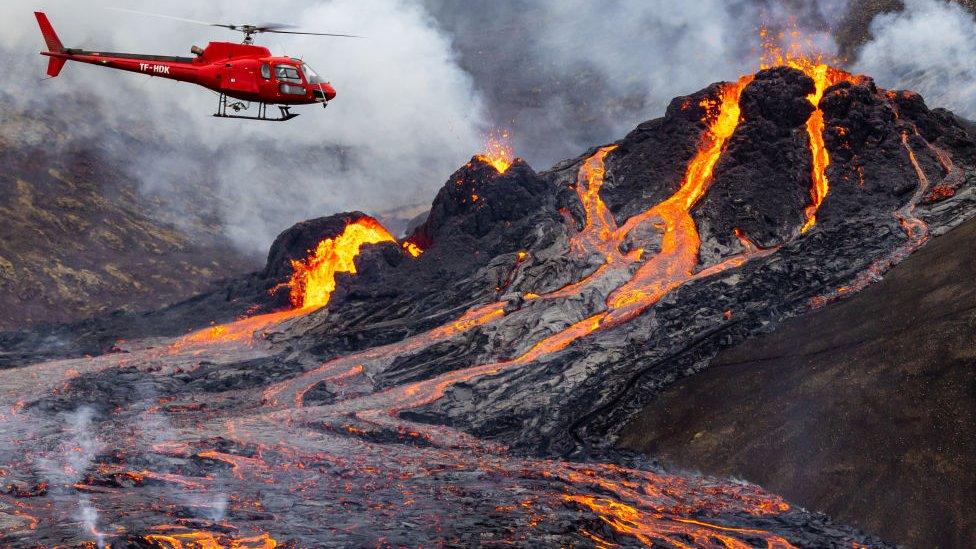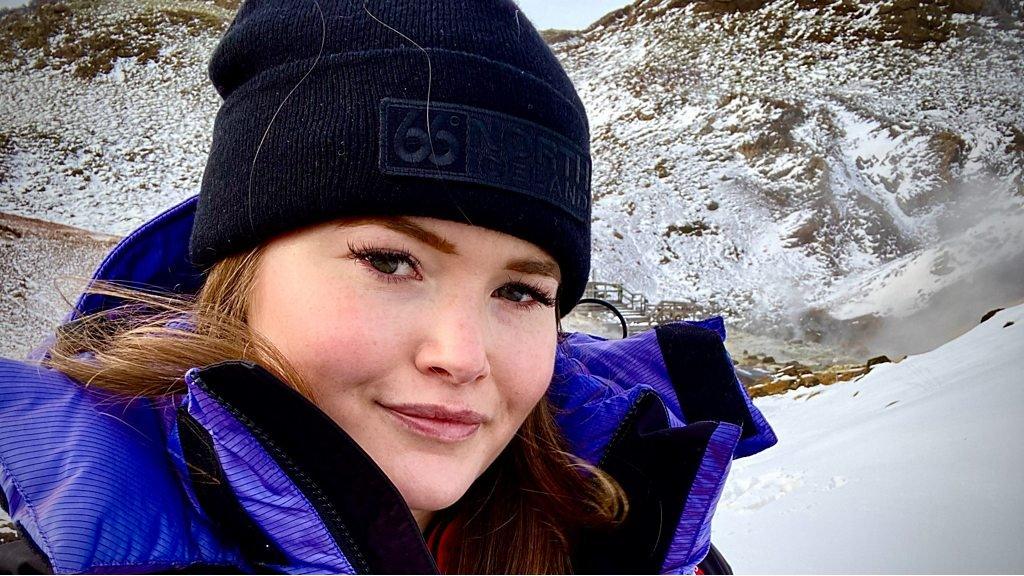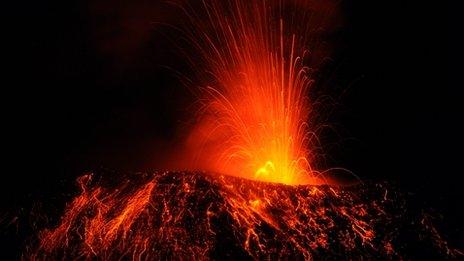Iceland volcano: Lava-spewing Fagradalsfjall 'subsiding'
- Published
Aerial footage shows lava flowing from the volcano south-west of Reykjavik in Iceland
A volcano which erupted on Friday night near Iceland's capital Reykjavik seems to be subsiding, scientists say.
Lava at Fagradalsfjall burst through a crack in the Earth's crust hundreds of metres long and a series of small fountains turned the night sky red.
Icelanders had been bracing themselves for an eruption for several weeks, after the island nation recorded more than 50,000 recent earthquakes.
Meteorologists said the eruption was small and no-one was in danger.
The last eruption there was some 800 years ago.
In 2010, the eruption of another volcano, Eyjafjallajokull, brought air traffic to a halt across Europe.
However, the eruption of Fagradalsfjall has not spewed out much ash, so no major disruption is expected.
The biggest threat was pollution from the gases that had been released, and nearby residents were asked to keep their windows shut.
But the Icelandic Meteorological Office (IMO) said in a report on Saturday that the pollution was likely to have little effect on the health and well-being of the area's inhabitants, external.
Officials quoted by AFP news agency said that the area of the eruption was open to the public, but could only be accessed by a difficult hike of several hours from the nearest road.

The lava burst through cracks in the Earth's crust
There is also a potential danger from sulphur dioxide gas.
"Currently gas pollution is not expected to cause much discomfort for people except close up to the source of the eruption. The gas emissions will be monitored closely," the IMO said.
What happened on Friday evening?
The IMO said the eruption of Fagradalsfjall began at about 20:45 GMT on Friday, and was later confirmed via webcams and satellite images.
A coastguard helicopter was sent to survey the area, about 30km (19 miles) from Reykjavik.

It then sent first images of the lava snaking its way down after the eruption.
"I can see the glowing red sky from my window," said Rannveig Gudmundsdottir, who lives in Grindavik, 8 km (5 miles) from the eruption.
A magnitude 3.1 earthquake was recorded 1.2 km from Fagradalsfjall just several hours earlier.
Iceland frequently experiences tremors as it straddles two tectonic plates, which are drifting in opposite directions.


- Published17 March 2021

- Published2 December 2011
